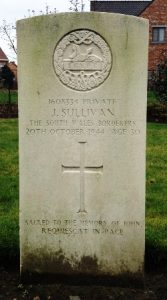Llangynidr is a village situated some four miles west of Crickhowell and nine miles south-east of Brecon on the B4558 road, in the county of Breconshire. The River Usk and the Monmouthshire and Brecon Canal run through the village. The men of the village who fell during both World Wars are commemorated on the village war memorial, which is located in the south-east corner of St. Cynidr and St. Mary Churchyard, which is adjacent to Duffryn Road.
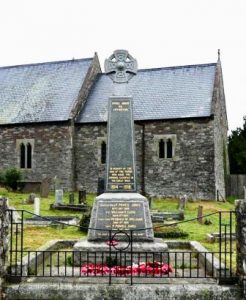
The Great War, 1914-1918
William George Bevan, Private, 267428, Monmouthshire Regiment. William was the son of Robert Bevan and Charlotte Bevan (nee Gegg), of Danydarren Farm, Duffryn, Llangynidr. He enlisted into the 2/1st (Brecknockshire) Battalion, South Wales Borderers at Brecon on 3 November 1914. The battalion initially remained in Brecon until April 1915 when it moved to Dale, in Pembrokeshire and remained there for eight months before joining the 68th (2nd Welsh) Division at Bedford. William embarked for France at Southampton on 15 June 1916 and on 5 July was posted from the Infantry Base Depot at Rouen to the 2nd Battalion, Monmouthshire Regiment, which was the Pioneer Battalion to the 29th Division. The Division had seen heavy fighting during the opening day of the Somme offensive, during its assault on Y-Ravine, on 1 July 1916, before being pulled out of the line to rest and rebuild. The Division then moved back into the line and took part in the latter stages of the Somme offensive, before wintering on the Somme. William took ill at the end of January 1917 and was hospitalised with laryngitis. He spent several weeks at home recovering before returning to France to re-join the 2nd Monmouth’s on 15 June 1917, by which time the Division was at Le Meillard, resting after its efforts during the Battle of Arras. The Division was then transferred to the Ypres Salient, taking over positions on the Yser Canal Bank by the end of the month, relieving units of the 38th (Welsh) Division in order for them to train for the forthcoming Passchendaele offensive. William was killed whilst the 2nd Monmouth’s were at work on the Canal Bank on 12 July 1917. The 20-year-old is buried in Bard Cottage Cemetery, Belgium.
John Davies, Private, 19379, Royal Welsh Fusiliers. John was the son of Evan Davies and Margaret Davies, of Penralley, Llangynidr. He worked in Atherton, Lancashire prior to the war and enlisted there into the 8th Battalion, Royal Welsh Fusiliers soon after the outbreak of war. The battalion had formed at Wrexham before joining 40 Brigade, 13th (Western) Division on Salisbury Plain and in July 1915 embarked for the Mediterranean, landing at Cape Helles, Gallipoli from 6 July 1915, relieving the 29th Division. The Division then left and returned to Mudros at the end of the month before landing at ANZAC Cove from 3 August 1915, to take part in a diversionary offensive alongside the Anzac Corps, to divert attention away from the main landings at Suvla. Soon afterwards the Division was transferred from ANZAC to Suvla Bay. It was evacuated from Suvla on 19 December 1915, before finally being evacuated off the peninsula on 8 January 1916 and moved to Port Said, to join the Suez Canal defences. On 12 February 1916 the Division began to move to Mesopotamia, to strengthen the force being assembled for the relief of the besieged garrison at Kut al Amara. By 27 March, the Division had assembled near Sheikh Saad and came under orders of the Tigris Corps, and then took part in the attempts to relieve Kut. However, after these efforts failed and Kut fell, the British force in the theatre was built up and reorganised. John was killed in Mesopotamia on 25 January 1917. The 33-year-old has no known grave and is commemorated on the Basra Memorial, Iraq.
William Jones Evans, Captain, Royal Army Medical Corps. William was born at Llangynidr on 19 April 1890, the only son of Reverend William Evans and Zillah Evans (nee Jones). The family had moved to Tegfryn, Hillside, Risca by 1901 and William was educated at Risca Intermediate School before studying Medicine at Cardiff University and at University College Hospital, London, where he served with the Officer Training Corps. William was commissioned as Second Lieutenant into the Royal Army Medical Corps in March 1916 and was posted to the 2/1st (South Midland) Field Ambulance, which was attached to the 61st (2nd South Midland) Division. William was then attached to the 2/6th Battalion, Gloucestershire Regiment as the battalion Medical Officer. The Division moved to France during 21 May 1916, moving to positions at Fromelles. Its first major action was during the disastrous diversionary attack at Fromelles on 19 July 1916, which saw the Division suffer very heavy casualties for no significant gain. The Division was not used for any major offensive until March 1917 when it became one of the Divisions employed in the cautious pursuit of the Germans when the German army withdrew to the Hindenburg Line. On 17 March, the Division captured Chaulnes and Bapaume, then later that year moved north to the Ypres Salient to join the great Passchendaele offensive. The Division then took part in the Battle of Langemarck, between 16 and 18 August 1917 and in late August and early September it was involved in the efforts to push the line forward at positions around Schuler Farm and Aisne Farm near Kerselaar. William was treating wounded men at the Advanced Dressing Station at Wieltje on 13 September 1917 when he was badly wounded in the head by shrapnel during a German artillery bombardment. He died of his wounds that same day. His body was carried to Vlamertinghe Mill and the 27-year-old was buried in Vlamertinghe New Military Cemetery, Belgium. Two of his cousins, Frank and Percy Powell-Jones also fell during the war. (See below).
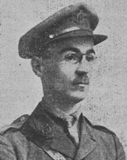
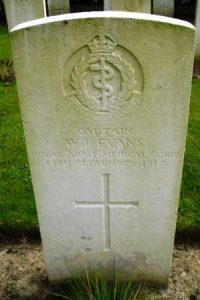
Alfred Jones Farr, Private, 27880, Border Regiment. Alfred was the son of Thomas Sivell Farr and Elizabeth Farr (nee Jones), of the Boat House, Llangynidr. His mother died when he was just three years old and his father remarried, to Margaret Anne Watkins. Alfred worked as a quarryman after leaving school, then joined the army as a young man, enlisting into the South Wales Borderers (Militia) on 31 July 1907. Alfred then left the Militia following the formation of the Territorial Army in 1908 and enlisted into the Royal Artillery at Brecon on 8 February 1911. He was posted to Athlone for training, but on 7 November 1911 Alfred was posted as a deserter from 110 Battery, Royal Field Artillery. He was apprehended at Talybont on 4 August 1913 and tried by General Court Martial, being found guilty of desertion. Alfred was discharged from the army at his own request three months later. This obviously did not stop him from enlisting into the Military Mounted Police on 16 November 1914. Alfred married Maggie Jones, of Rhymney, whilst on leave on 23 February 1915 and their only child, Albert, was born on 31 May. Alfred was attached to the 19th (Western) Division Military Mounted Police and embarked for France with the Division on 18 July 1915. The entire 19th Division then moved to the Nursery Sector at Calonne for trench initiation alongside the Dehra Dun Brigade. The infantry battalions of the division then began carrying out the usual routines of rotating in the trenches: four days in the front line; four in support; and four in reserve, interspersed with training regimes and carrying out working parties and trench raids. Just south, the British launched a great offensive around the town of Loos on 25 September 1915, and the 19th Division was ordered to attack from its positions at the same time, to attempt to draw enemy attention away from the main battle area. The attacking battalions of the 19th Division were in place by 04.00, and then at 05.50 the men climbed out of their trenches to launch their assault, behind a gas and smoke screen. The assault was a disaster, and heavy casualties were suffered by the 19th Division for no gain. The Division wintered in the same sector but in the following Spring moved south to the Somme, taking part in the opening assault upon Ovillers-La Boiselle on 2 July 1916. At some time after this, Alfred transferred to the infantry and was posted to the 6th Battalion, Border Regiment, which was attached to 33 Brigade, 11th (Northern) Division. The Division had landed in France on 6 July 1916 following service at Gallipoli and in Egypt. The Division moved to the Somme from Marseilles and took part in the Battle of Flers-Courcelette in September, before spending the winter on the Ancre. In May 1917 the Division moved north and in June 1917 took part in the Battle of Messines. Alfred was killed at Ypres on 25 July 1917, during the build up to the main Passchendaele offensive. Photographs of his wife and his baby son were found in the pocket of his tunic. The 29-year-old was buried in La Brique Military Cemetery No.2, Belgium.
David John Harris, Private, 3596, Australian Infantry. David was the son of Samuel Harris and Ann Harris (nee Bevan), of Neaudd-Fach, Llangynidr. He emigrated to Australia in 1907 and found work at a sugar plantation in South Mossman, Queensland. David enlisted into the 9/1st Pioneer Battalion, Australian Imperial Force at Sydney on 27 November 1916. On 24 January 1917 he embarked at Sydney for England aboard HMAT Anchises and disembarked at Devonport on 27 March, before joining the Australian Depot at Durrington, on Salisbury Plain. David had two spells of leave over the coming months, returning home both times to see his family, but on the second occasion overstayed his leave by three days. On 11 July he transferred to the 2nd Battalion, Australian Infantry and embarked for France on 18 October, joining the battalion at Ypres, where it was attached to the 1st Brigade, 1st Australian Division. The battalion had suffered heavy losses during the Battles of Polygon Wood and Broodeseinde by the time that David arrived. He then took part in a number of minor action that the Division was involved in during the latter stages of the Passchendaele offensive, before the Australians settled down for the winter in Flanders, in the Messines sector. On 22 February 1918 David was invalided sick, but on 6 March re-joined his battalion. The 1st Division was still at Messines when the Germans launched their final offensive on the Somme on 21 March 1918. The 1st Division had begun moving to the Somme when the Germans launched the second phase of their offensive, on the Lys, on 9 April 1918 and was rushed back, before helping safeguard the vital rail point of Hazebrouck. The division remained in Flanders until July, carrying out a number of successful trench raids, before re-joining the Australian Corps on the Somme on 8 August 1918. On that day a combined assault by the Australians, Canadians and British, at Villers Bretonneux had broken the German lines and on 21 August a general assault was launched by the Allies on the Somme front. Two days later the 1st Division attacked south of the River Somme towards Chuignes, capturing some 2,000 German prisoners but suffering heavy losses. David was killed in action near Jeancourt on 10 September 1918. The 33-year-old has no known grave and is commemorated on the Villers-Bretonneux Memorial, France. His brother, Henry, died in India a month later.
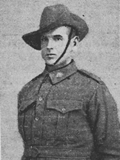
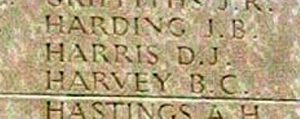
Henry Harris, Private, 200515, South Wales Borderers. Henry was the son of Samuel Harris and Ann Harris (nee Bevan), of Neaudd-Fach, Llangynidr. He trained as a joiner prior to the war. Henry enlisted into the Brecknockshire Battalion, South Wales Borderers at Brecon soon after the outbreak of war. The battalion had mobilised at Brecon attached to South Wales Brigade, Welsh Division, moving to Pembroke Dock and then Dale. On 29 October 1914 the battalion sailed from Southampton for Bombay, before transferring to Aden, where the battalion took part in a tragic crossing of the desert which saw a number of men die of heatstroke. In August 1915 the battalion embarked for India, arriving at Bombay, before spending the rest of the war on garrison duties in the country. Henry worked as a carpenter during his time in India, probably carrying out work in the barracks at Mhow. He became ill towards the end of the war and was hospitalised at Mhow on 21 October 1918. Henry died of enteric fever four days later, on 24 October 1918. The 24-year-old was buried with full military honours in Mhow Military Cemetery. He is also commemorated on the Kirkee 1914-1918 Memorial, India. His brother, David, was killed in France the previous month.
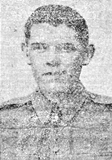
Albert Llewellyn Jenkins, Lance Corporal, 53735, Welsh Regiment. Albert was the son of Thomas Jenkins and Anne Jane Jenkins (nee Morgan), of Canal Cottage, Llangynidr. He worked as a stone mason prior to the war. Albert enlisted at Abergavenny into the 3rd Battalion, Monmouthshire Regiment and embarked for France with the battalion on 13 February 1915. The battalion joined 83 Brigade, 28th Division at Ypres and saw heavy fighting during the Second Battle of Ypres, which was launched following a German gas attack on 22 April 1915. All three battalions of the Monmouthshire Regiment suffered such terrible losses that on 27 May 1915 the survivors were merged into one battalion, in 84 Brigade, 28th Division. Albert was wounded at the foot during the battle, but soon returned to duty. On 11 August 1915 the 3rd Monmouth’s resumed its identity and transferred to the 49th (West Riding) Division as the Divisional Pioneer Battalion. The Division saw its first major engagement at the opening of the Battle of the Somme, holding the line between Gommecourt and Serre, and suffered heavy casualties on the opening day, 1 July 1916. The Division saw further fighting during the Battle of Bazentin, capturing Ovillers, then on 31 August 1916 the 3rd Monmouth’s was disbanded. Albert was initially transferred to the 9th Entrenching Battalion, before being transferred to the 9th Battalion, Welsh Regiment, which was on the Somme attached to 58 Brigade, 19th (Western) Division. The Division wintered on the Somme and in February followed the German withdrawal to the Hindenburg Line. During the middle of March 1917, the Division was relieved from the line and began to move north, taking over positions in the Ypres Salient. On 2 May 1917 the 9th Welsh was holding the line in the Tuileries sector, near Zillebeke, when Albert was badly wounded by shell fragments to his leg. He was evacuated to the Canadian Casualty Clearing Station at Lijssenthoek, where his leg was amputated, but gangrene set in, and he died of his wounds on 4 May 1917. The 33-year-old is buried in Lijssenthoek Military Cemetery, Belgium.
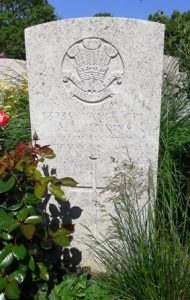
William Victor Lloyd, Private, 9293, South Wales Borderers. William was the son of Thomas Martin Lloyd and Sarah Lloyd (nee Jenkins), of Glebe House, Llangynidr. His father died in 1894 and his mother five years afterwards, so William and his two sisters were raised by their uncle, John Jenkins. William had worked as a mule driver for the London and North Western Railways at Beaufort prior to the war. He was an was an Army Reservist, who had served in the army as some time and mobilised in August 1914, joining the 3rd Battalion, South Wales Borderers at Brecon. William embarked for France on 13 September 1914 among a draft for the 1st Battalion, South Wales Borderers, which was attached to 3 Brigade, 1st Division, alongside the 2nd Welsh. The Division had taken part in the Battle of Mons on 23 August and in the subsequent retreat to the Marne, where the German Drive on Paris was stopped. William joined the 1st SWB on the Marne, just prior to the next major action, the Battle of the Aisne, which saw the Germans forced to entrench along the Chemin-des-Dames Ridge. William was badly wounded at the Aisne and was evacuated back to England for treatment, being taken to the 1st Western General Hospital at Liverpool where he died of his wounds on 5 November 1914. The remains of the 27-year-old were brought home and he was buried with full military honours in St. Mary’s Churchyard, Llangynidr.
Frank Edward Lewis, Private, 1649, Monmouthshire Regiment. Frank was born at Llangynidr in 1898, the son of Arthur Edward Lewis and Rosa Lewis (nee Cox). The family had moved to Crossonen Cottage, Mardy by 1901. Frank worked in the Waggon Department for the London and North Western Railway at Abergavenny prior to enlisting at Abergavenny into the 3rd Battalion, Monmouthshire Regiment soon after the outbreak of war. The battalion mobilised at Abergavenny on 4 August 1914 attached to the Welsh Border Brigade, Welsh Division, before moving to Pembroke Dock. A week later the Division moved to Oswestry, before entraining for Northampton. In February 1915 the 3rd Monmouth’s left the Welsh Division and landed in France on 14 February 1915, before entraining for Steenvoorde. The battalion was inspected by Major General Sir Herbert Plumer on 23 February then the men attended several demonstrations and classes before moving to billets at St. Jans Cappel on 28 February. On 1 March the CO, with 8 officers and 16 NCOs proceeded to the trenches for 24 hours instruction before the men entered the trenches for the first time two days later. On 3 March the 3rd Monmouth’s joined 83 Brigade, 28th Division, before moving into trenches near St Quentin Cabaret, Wulverghem a week later. After a series of routine moves, the 28th Division took over trenches east of Ypres, by 6 May, relieving a French Division in the sector east of Polygon Wood and its infantry battalions began the usual routine of trench rotation. On 17 April 1915 the 3rd Monmouth’s relieved the 5th King’s Own in the front line for a spell which would turn out to last for 17 days without relief, as on 22 April 1915 the Germans launched a poison gas attack, against French Colonial troops, which heralded the opening phase of the Second Battle of Ypres. The initial fighting raged to the north of the Division, but by 3 May Polygon Wood came under attack and had to be evacuated, the 3rd Monmouth’s withdrawing to the G.H.Q. line at Potijze. The fighting was of such intensity that all three battalions of the Monmouth’s were almost annihilated and on 10 May a Composite Battalion was formed from the remnants of 83 Brigade, which proceeded to the G.H.Q. line Potijze. Frank was killed in action here on 19 May 1915. The 19-year-old has no known grave and is commemorated on the Ypres (Menin Gate) Memorial, Belgium. Frank is not commemorated on the Llangynidr war memorial, but at Abergavenny.
Alfred James Lovett, Private, M/400018, Royal Army Service Corps. Alfred was the son of Alfred Lovett and Sarah Lovett (nee Prosser), of Pontganol Cottage, Llangynidr. He enlisted into the Royal Army Service Corps and was posted to the Vehicle Repair Depot at Kempton Park. Alfred did not serve overseas but remained on home service. He died at Kempston, probably of influenza, on 12 April 1919. The 25-year-old was buried in Brookwood Military Cemetery, Surrey. His parents later emigrated to Queensland, Australia.
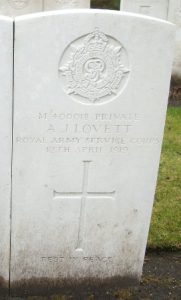
Frank Powell-Jones, Despatch Rider. Frank was the son of Morgan Powell Jones and Margaret Jones (nee David), of Pwll Court, Llangynidr. He worked for his father’s successful timber business prior to the war. Frank volunteered to serve as a Despatch Rider soon after the outbreak of war and lodged at Liverpool. On the night of Thursday 26 September 1914, he was returning to Liverpool from Southport, riding a motorcycle and sidecar, containing a friend, when the pair drove past an army camp at Waterloo. A sentry on duty challenged the men, who could not hear him due to the engine noise and carried on their way. The sentry raised his rifle and fired a shot towards the motorcycle, hitting Frank in the head and killing him instantly. A later court of enquiry ruled that his death was ‘Justifiable Homicide’. Frank was 27 years old when he was killed that night. His body was brought back home, and he was buried at the Baptist Chapel, Llangynidr. Frank is not commemorated as a war casualty by the CWGC. His brother, Percy, was killed on active service in Aden in 1916.
Percival Morgan Powell-Jones, Captain, South Wales Borderers. Percival was the son of Morgan Powell Jones and Margaret Jones (nee David), of Pwll Court, Llangynidr. He worked for his father’s successful timber business prior to the war. Percival was commissioned as Second Lieutenant into the Brecknockshire Battalion, South Wales Borderers on 6 August 1914. The battalion, under the command of Lord Glanusk, had mobilised at Brecon attached to South Wales Brigade, Welsh Division, moving to Pembroke Dock and then Dale. On 29 October 1914 the battalion sailed from Southampton for Bombay, before transferring to Aden, where the battalion took part in a tragic crossing of the desert which saw a number of men die of heatstroke. In August 1915 the battalion embarked for India, arriving at Bombay, before spending the rest of the war on garrison duties in the country. Percival must have had a thirst for action, as he volunteered to join the Norfolk Regiment, before being attached to the Seaforth Highlanders which was serving in Mesopotamia. Percival was reported as missing on 22 April 1916 and was later found to have drowned in the trenches. The 23-year-old has no known grave and is commemorated on the Basra Memorial, Iraq. His brother, Frank, had been killed in September 1914.
William John Powell, Private, 20359, South Wales Borderers. William was the son of John and Hannah Powell, of Llangynidr. He married Elizabeth Price in 1913 and the couple had a daughter, Lilian Violet Powell, born soon afterwards. The family lived at 1, Council Street, Wiliamstown, Ebbw Vale prior to the war. William enlisted at Ebbw Vale into the 10th Battalion, South Wales Borderers soon after the outbreak of war. The battalion was raised at Brecon by the Welsh National Executive Committee in October 1914, moving to Colwyn Bay to join 130 Brigade, 43rd (Welsh) Division. On 29 April 1915 the formation became 115 Brigade, 38th (Welsh) Division, before moving to Winchester to complete its training. On 4 December 1915 the battalion landed in France and the entire Division moved to the Nursery Sector near Fleurbaix for trench initiation alongside the Guards Division. The Division then held a sector of the line near Cuinchy before marching south to the Somme sector in June 1916 to take part in the assault on Mametz Wood. The first attack on the wood was launched on a two-battalion front on 7 July, but failed, and the Divisional Commander, Sir Ivor Philipps, was replaced before the Division attacked again on a two Brigade front on 10 July 1916. After two days of ferocious hand-to-hand fighting, the wood was cleared up to its northern edge, before the battered Division was relieved. It then took over a section of the front at Hébuterne before moving to the Ypres Salient and taking over the Canal Bank sector at Boesinghe. The infantry battalions of the Division then began carrying out the normal pattern of rotation in the trenches, four days in the front, four in support and four in reserve, whilst also working on trench improvement, digging new trenches, and also carrying out regular patrols and trench raids. On 31 July 1917 the Division launched its famous assault on the Pilckem Ridge, capturing Iron Cross and reaching its objective of the Steenbeek, then played a supporting role in the Battle of Langemarck. The Division was transferred to the Sailly-sur-la-Lys sector in September and remained in the area over the winter before being moved to positions north of Albert, at Bouzincourt Ridge, at the end of March 1918, relieving the battered 2nd and 47th Divisions. It held this sector, again carrying out minor operations and trench raids, over the coming months, before taking part in the great offensive of 21 August 1918, and began its advance towards the Hindenburg Line. Over the coming days the Division captured Thiepval Ridge, Pozieres, and Mametz Wood, before taking Longueval and Delville Wood and by 28 August 1918 was ready to assault the village of Morval. William was killed in action during the assault that day. The 34-year-old is buried in Morval British Cemetery, France.
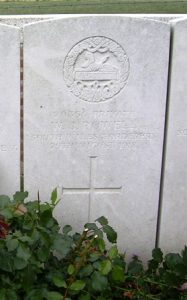
Joseph Price, Private, 13957, South Wales Borderers. Joseph was the son of John and Catherine Price, of Llangynidr. The family resided at the Castle Inn, Rassau by 1911 and Joseph worked as a coal hewer. He enlisted into the 4th Battalion, South Wales Borderers at Brecon soon after the outbreak of war. The battalion formed at Brecon in August 1914 before moving to Park House Camp, near Tidworth to join 40 Brigade, 13th (Western) Division, then underwent several moves before sailing from Avonmouth for Mudros on 29 June 1915, in preparation to join the Gallipoli campaign. The Division began landing at Cape Helles, Gallipoli from 6 July 1915, relieving the 29th Division. It then left and returned to Mudros at the end of the month, before landing at ANZAC Cove from 3 August 1915, to join the Anzacs in readiness to take part in an attack intended to divert Turkish attention away from new landings at Suvla Bay. Joseph was killed in action at Anzac on 7 August 1915, probably by Turkish artillery fire. The 32-year-old is buried in New Zealand No. 2 Outpost Cemetery, Gallipoli. His brother, William, had been killed on the Aisne in 1914. Neither man is commemorated on the Llangynidr war memorial.
William Arthur Price, Private, 7924, South Wales Borderers. William was the son of John and Catherine Price, of Llangynidr. The family resided at the Castle Inn, Rassau by 1911 and William worked as a limestone tipper. He had enlisted into the South Wales Borderers Militia on 26 April 1898 and by the time war erupted was on the Army Reserve. William was mobilised on 4 August 1914 and was posted to the 1st Battalion, South Wales Borderers, which was at Bordon attached to 3 Brigade, 1st Division. William landed in France with the Division on 13 August 1914 and the Division then entrained for the Belgian frontier, near the town of Mons, joining the BEF. On 23 August 1914 the Germans attacked Mons in overwhelming force and the BEF was driven south, retreating over the coming days to the River Marne, where the German drive on Paris was halted. The Germans then withdrew to the heights of the Chemin-des-Dames ridge, to the north of the River Aisne, and the BEF advanced before attacking the German positions on 13 September. Neither side could gain any ground, despite ferocious fighting, so the BEF was ordered to dig in, thus beginning the first stages of the forming of the Western Front. William was killed in action during an artillery bombardment on the trenches held by the 1st SWB on 18 September 1914. The 34-year-old has no known grave and is commemorated on the La Ferté-Sous-Jouarre Memorial, France. His brother, Joseph was killed at Gallipoli the following year. Neither man is commemorated on the Llangynidr war memorial.
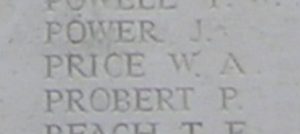
Thomas Sidney Richards, Gunner, 183826, Royal Garrison Artillery. Thomas was the son of John and Sarah Richards, of Penbailey, Llangynidr. He enlisted into the Royal Garrison Artillery at Brecon and was posted to the 237th Siege Battery, Royal Garrison Artillery. The battery had been raised on the Humber before embarking for France on 23 January 1917. The battery moved to Ypres where it remained for the remainder of the year, taking part in the Passchendaele offensive. The Battery moved slightly south during the winter of 1917-18, taking up positions near Neuve-Chapelle. Thomas was killed in action here on 14 March 1918, probably by German counter-battery fire. The 20-year-old is buried in Le Touret Military Cemetery, Richebourg-L’avoue, France.
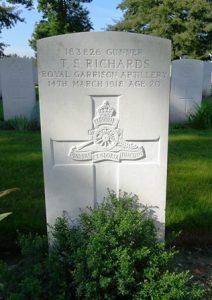
Henry Williams, Private, 46560, Welsh Regiment. Henry was the son of Henry and Hannah Williams, of Laurel Cottage, Llangynidr. He enlisted into the Brecknockshire Battalion, South Wales Borderers soon after the outbreak of war and was posted to Dale with the 2/1st Brecknocks. Henry served in Dale, Neyland and Milford Haven over the coming months before the battalion moved to Bedford at the end of 1915, joining the 68th (2nd Welsh) Division. In September 1916 Henry was drafted to France and was posted to the 18th Battalion, Welsh Regiment, which was attached to 119 Brigade, 40th (Bantam) Division. Late in 1916 the Division moved south to the Somme, and fought at the Battle of the Ancre, before remaining in the sector over the winter. In March 1917 the Germans withdrew to their shortened line, called the Hindenburg Line, and the 40th Division was among the units which followed the withdrawal. Later in the year the Division took part in the Battle of Cambrai and launched an attack on Bourlon Wood on 23 November 1917. The attack was carried out by 119 Brigade, led by the 12th SWB and 19th RWF. The 17th Welsh was in support for the initial assault, but was soon ordered to advance, to support the two attacking battalions. Heavy fighting raged within the wood over the coming days, with the 18th Welsh also being thrown forwards into the fight, and the Division suffered terribly. Henry was killed in Bourlon Wood on 23 November 1917. The 24-year-old has no known grave and is commemorated on the Cambrai Memorial, Louverval, France.
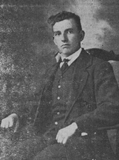
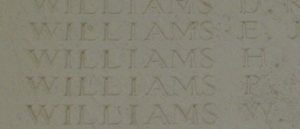
Reginald William Williams, Lance Corporal, 2047, South Wales Borderers. Reginald was the son of John Arthur Williams and Mary Annie Williams, of 22, Maindee Parade, Newport. He was residing at Dock Cottage, Llangynidr by 1911 and worked as a clerk. He played rugby for Crickhowell. Reginald married Zillah Powell, of Llangynidr on 5 September 1911 and the couple had two children over the coming years. Reginald enlisted into the Brecknockshire Battalion, South Wales Borderers at Brecon soon after the outbreak of war. The battalion, under the command of Lord Glanusk, had mobilised at Brecon attached to South Wales Brigade, Welsh Division, moving to Pembroke Dock and then Dale. On 29 October 1914 the battalion sailed from Southampton for Bombay, before transferring to Aden, where the battalion took part in a tragic crossing of the desert which saw a number of men die of heatstroke. Reginald was amongst the men to suffer of that terrible end, dying of heatstroke on 4 June 1915. The 26-year-old is buried in Maala Cemetery, Yemen.
World War Two, 1939-1945
James William Baugh, Gunner, 819960, Royal Artillery. James was the son of Charles William Baugh and Elizabeth May Baugh (nee Probert), of Llangynidr. He married Edna May Toy in 1937 and the couple set up home at Ash Cottage, Llangynidr. James enlisted into the Royal Artillery and was posted to 496 Battery, 132 (The Glamorgan Yeomanry) Field Regiment, Royal Artillery. The battery was the successor of the Glamorgan Yeomanry, which had served as infantry during the Great War and was a local Territorial Army battalion, based in Glamorganshire. Upon the outbreak of WW2, the regiment was known as the 81 (Welsh) Field Regiment, Royal Artillery and comprised of two batteries, which served throughout the war with the 53rd (Welsh) Division. The regiment formed a second line unit, the 132 (Welsh) Field Regiment in September 1939 and was deployed to North Africa attached to the 78th Infantry Division. James died in North Africa on 12 August 1943. The 30-year-old was buried in Le Petit Lac Cemetery, Algeria.
William Powell Davies, Private, 14339488, General Service Corps. William was the son of Thomas Davies and Caroline Davies (nee Powell), of Llangynidr. He married Delsie Louvain Edwards in 1937 and the couple set up home at 88, Emlyn Avenue, Ebbw Vale. William enlisted into the General Service Corps soon after the outbreak of war. Little else is presently known of him, but William died in Oxford on 18 April 1943, aged 31. His remains were brought home and he was buried in St. Mary’s Churchyard, Llangynidr.
Emlyn Charles Hurlow, Corporal, 4032572, King’s Shropshire Light Infantry. Emlyn was the son of George Hurlow and Catherine Agnes Hurlow (nee Morris), of 2, Mill Cottages, Llangynidr. He enlisted into the army and was posted to the 2nd Battalion, King’s Shropshire Light Infantry. The battalion was on garrison duties in Jamaica when war broke out then returned to Britain to join the 185th Infantry Brigade. The brigade was originally assigned to the 79th Armoured Division but was then transferred to the 3rd British Infantry Division in April 1943, which was preparing for the invasion of Sicily. The 2nd KSLI was then replaced so it could return to Britain to participate in the Normandy Landings, landing on the Normandy beaches on 6 June 1944. Emlyn was killed in Normandy three days later, on 9 June 1944. The 23-year-old was originally buried at Bieville, but in May 1945 his grave was exhumed, and he was re-interred in La Delivrande War Cemetery, Douvres, France.
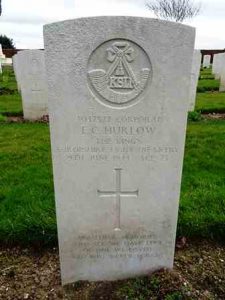
Frederick John William Kyte, Able Seaman, D/J 111905, Royal Navy. Frederick was born at Abergavenny on 15 July 1908, the son of John William Kyte and Elizabeth Kyte. His parents died when he was a young man, so on 15 July 1926 Frederick enlisted into the Royal Navy for twelve years. His first posting was aboard HMS Impregnable and then aboard HMS Valiant, before being posted to HMS Vivid I for further training. Frederick married Nina Movania Williams, of Llangynidr, at Devonport in 1934. He left the Royal Navy on 1 January 1939 and the couple moved back home to Llangynidr but following the outbreak of war Frederick re-joined the colours and was posted aboard the battleship HMS Repulse. The ship had originally seen service during the Great War but had been substantially upgraded and refitted during the inter-war years. At the beginning of the Second World War, Repulse was part of the Battlecruiser Squadron of the Home Fleet, carrying out patrols in the North Sea. Repulse escorted the convoy bringing the 1st Canadian Division to Britain in December 1939, before escorting the aircraft carrier Ark Royal on a search for German shipping around Spain. She was then assigned to the Norwegian Campaign in April 1940, before returning to the North Atlantic and took part in searches for several German capital ships, including the Bismarck before being transferred to East Indies Command. Towards the end of 1941, Winston Churchill sent a small group of fast capital ships, along with one aircraft carrier to Singapore, following the rise of Japanese presence in the Pacific area. HMS Repulse, together with HMS Prince of Wales set off with their destroyer escort in a group named Force Z and arrived in Singapore on 2 December 1941. On the evening of 8 December, Force Z left Singapore to attack Japanese shipping. The ships were spotted by a Japanese submarine on 9 December and a force of Japanese carrier-based dive bombers were despatched to attack Force Z. The attack began on the following morning, 10 December 1941 and tragically resulted in the sinking of both HMS Repulse and HMS Prince of Wales, with huge loss of life. Frederick was 33 years old when he was killed aboard Repulse that morning. He has no known grave and is commemorated on the Plymouth Naval Memorial, Devon.
Daniel Ivan Parry, Sergeant, Royal Air Force Volunteer Reserve. Daniel was born in Llangynidr in 1921. He enlisted into the Royal Air Force Volunteer Reserve and after training as a Wireless Operator/ Air Gunner was posted to No. 10 Operational Training Unit, which was based at RAF Abingdon, in Berkshire. On the night of 25 June 1942 Daniel took off from Abingdon aboard Armstrong Whitworth Whitley, Serial AD689, which had joined a large 1000-bomber group sent to destroy targets in Bremen. The Whitley was intercepted by a German night-fighter on the following morning, 26 June 1942, and crashed at Dalum Near Lingen-Ems, killing four of her crew of seven. Daniel was 19 years old when he was killed in the resulting crash and is buried beside three of his crew in Reichswald Forest War Cemetery, Germany.
John Sullivan, Private, 1608334, South Wales Borderers. John was the son of Patrick and Sarah Sullivan (nee O’Leary) of 6, Evans Street, Barry Dock. His parents were from Bantry, Co. Cork, but had moved to South Wales to find work. John must have lived at Llangynidr at some time prior to the war. He enlisted into the South Wales Borderers at Brecon and was posted to the 2nd Battalion, South Wales Borderers. The battalion had taken part in the ill-fated Norwegian campaign in 1940 before being forced to evacuate off the Ankenes Peninsula on 16 May. It then returned to Britain and became the only Welsh unit to take part in the opening assault on the Normandy beaches on D-Day, 6 June 1944, landing at Hable de Heurtot and capturing the bridge at Vaux-sur-Aure. The battalion saw heavy fighting in the Bocage and then around Caen and in the Falaise Pocket before crossing the Seine and helping clear Le Havre before joining the advance through Northern France into Belgium and Holland. The battalion then took part in Operation Market Garden, being amongst the troops ordered to advance by land and capture a series of strategically important bridges. John was killed in Belgium on 20 October 1944. The 30-year-old was originally buried in the village of St. Leonard, but on 2 July 1946 his body was re-interred in Geel War Cemetery, Belgium.
